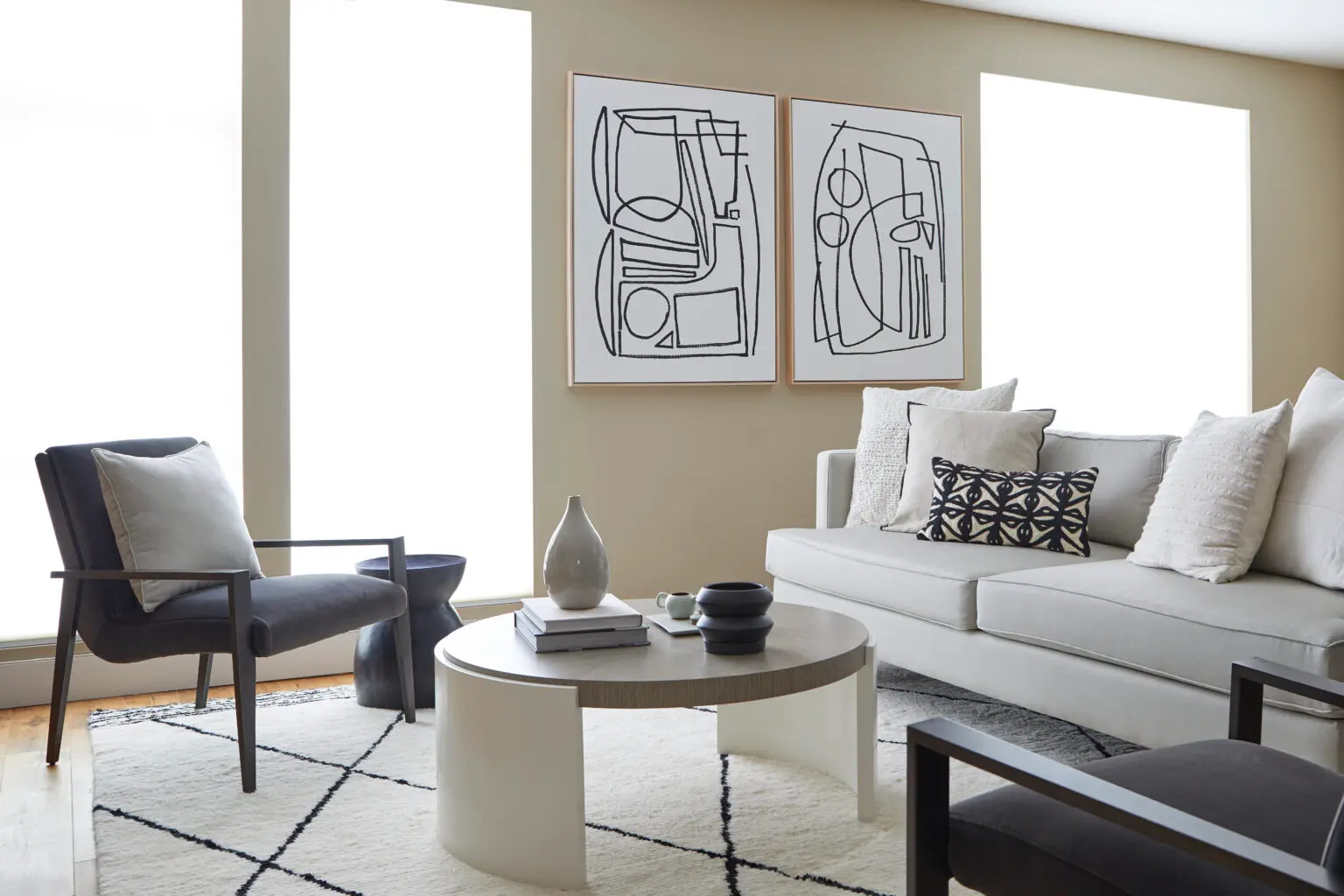




Interior design is more than just selecting furniture or picking paint colors—it’s a balanced combination of aesthetics and functionality. The 7 principles of interior design serve as the cornerstone for crafting harmonious and visually appealing spaces. Understanding these principles not only enhances your knowledge of interior design theory but also equips you with the interior design basics to transform your home into a masterpiece.
Balance ensures that a space feels visually and physically stable. It involves distributing elements like furniture, decor, and lighting evenly within a room. There are three types of balance in design in interior spaces:
Rhythm in interior design theory involves creating a sense of movement and flow within a space. This principle relies on repetition, alternation, and progression.
Harmony ensures that all elements in a space work together cohesively. By selecting a unifying theme, color palette, or material, you can create a sense of unity in your interior.
For example, using a consistent neutral color scheme throughout the house can tie different rooms together while allowing each space to maintain its unique character.
Proportion and scale focus on the relationship between objects within a space and the room itself.
Every room should have a focal point that draws attention and anchors the design. This could be an architectural feature, like a fireplace, or a statement piece of furniture, like a vibrant sofa.
To enhance the emphasis, use lighting, color contrast, or placement to guide the eye toward the focal point. For example, spotlighting an art piece with track lighting can create a dramatic effect.
Contrast involves combining different elements to create excitement and depth in a space. It can be achieved through:
Contrast prevents a room from feeling monotonous and keeps the design visually engaging.
No matter how beautiful a space is, it must be functional. Functionality ensures that the room meets the practical needs of its inhabitants while still being stylish.
By prioritizing functionality, you create spaces that are not only beautiful but also comfortable and livable.
Understanding the principles of interior design is the first step; applying them effectively is where the magic happens. Here are some tips:
1. Start with a Focal Point: Identify a feature you want to highlight, such as a piece of artwork or a fireplace.
2. Plan a Balanced Layout: Distribute furniture and decor evenly, keeping scale and proportion in mind.
3. Choose a Cohesive Palette: Use colors and textures that harmonize across the space.
4. Add Rhythm Through Patterns: Incorporate repeating elements, like striped rugs or patterned cushions, to create flow.
5. Experiment with Contrast: Pair different shapes, textures, and colors to make the space dynamic.
6. Prioritize Functionality: Ensure your design choices enhance, rather than hinder, daily activities.
Interior design theory provides a framework for understanding how different elements come together to create a cohesive space. By mastering the 7 principles of interior design, you can elevate your design skills, whether you’re refreshing your living room or tackling a full home makeover.
Learning these principles doesn’t mean following rigid rules—it’s about understanding why certain designs work and how to adapt them to reflect your personal style.
The 7 principles of interior design serve as the foundation for any successful project, offering guidance on creating balance, harmony, and functionality. Whether you’re diving into the basics of interior design or exploring advanced interior design theory, these principles can help transform any space into a stylish and inviting haven.
By embracing these timeless guidelines, you can approach any design challenge with confidence and creativity. Start small—experiment with a single room—and watch your home transform into a masterpiece that reflects your unique vision.
RECENT COMMENTS